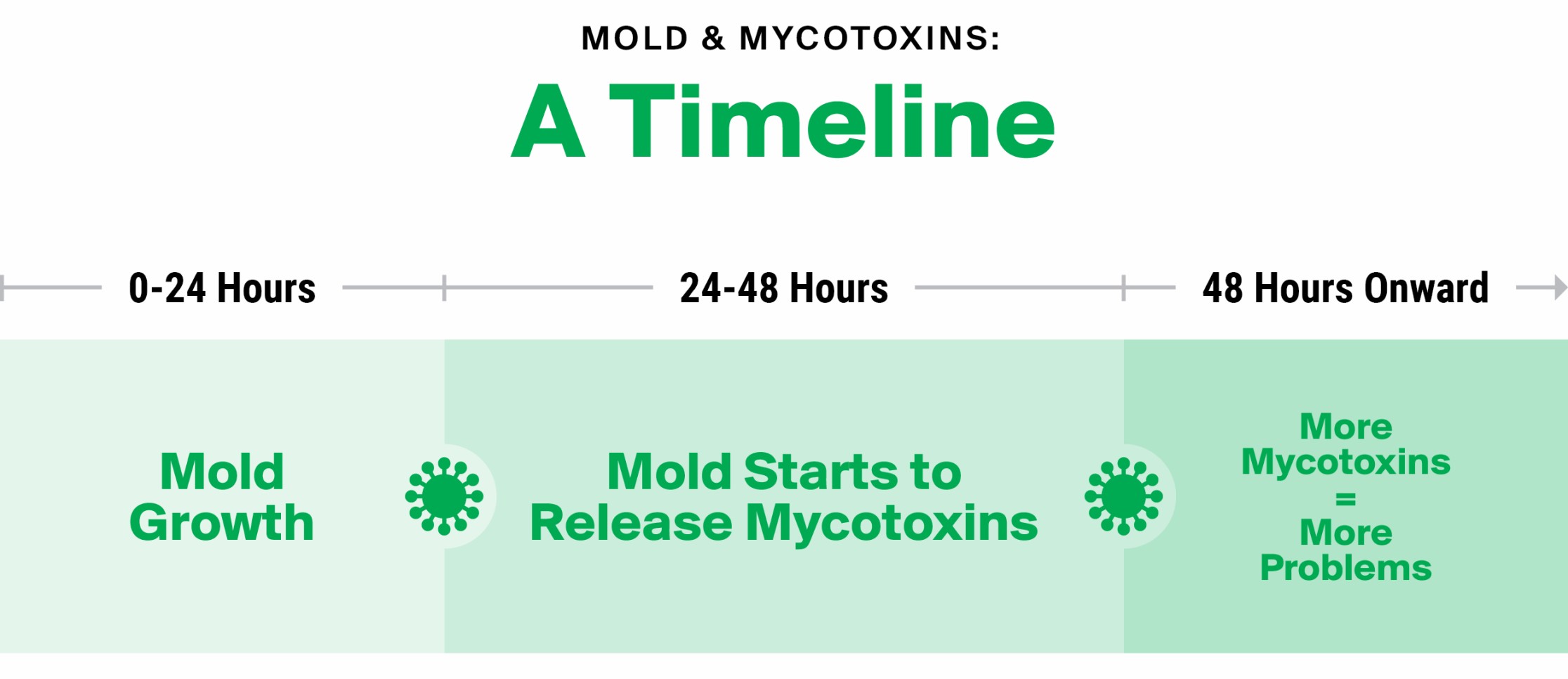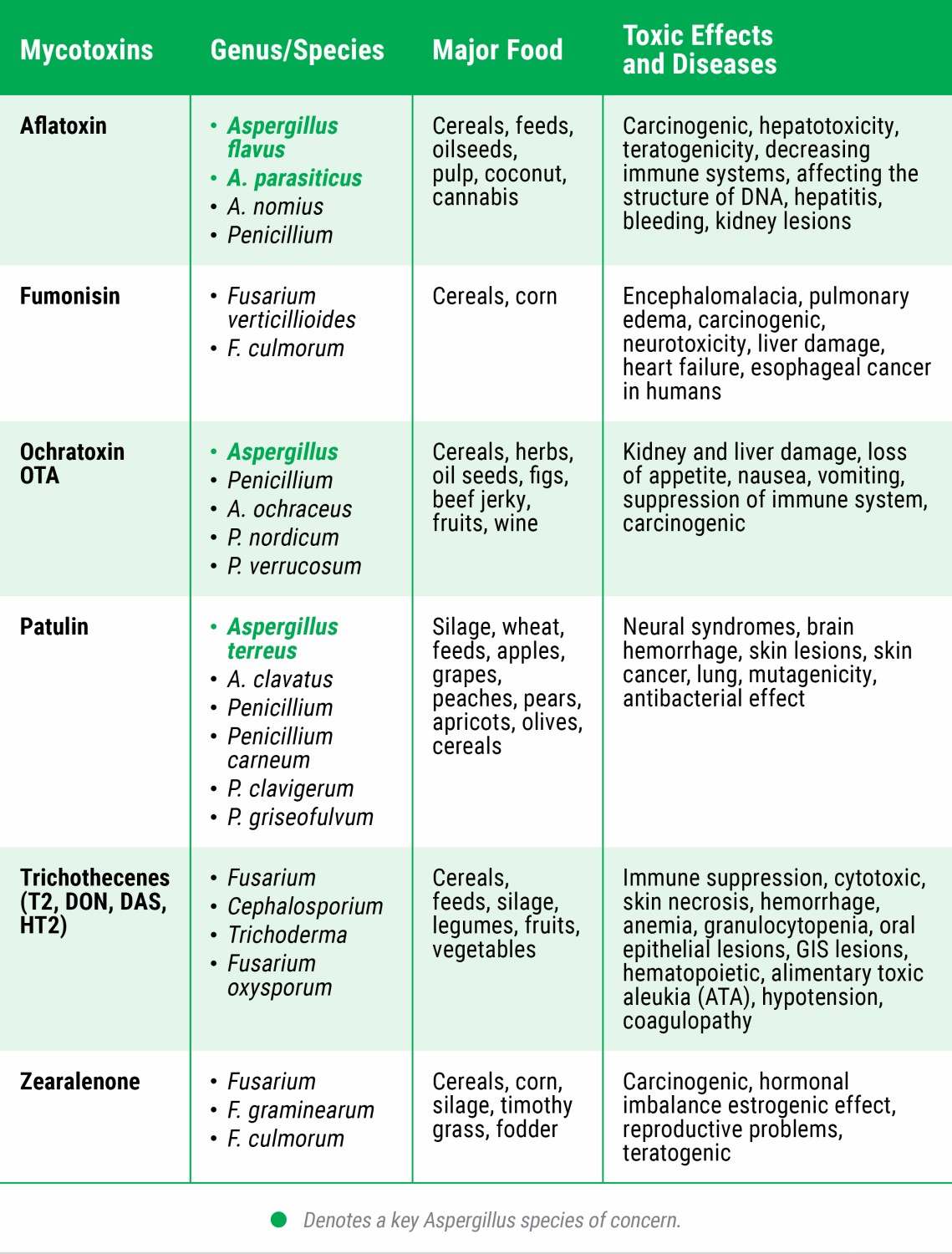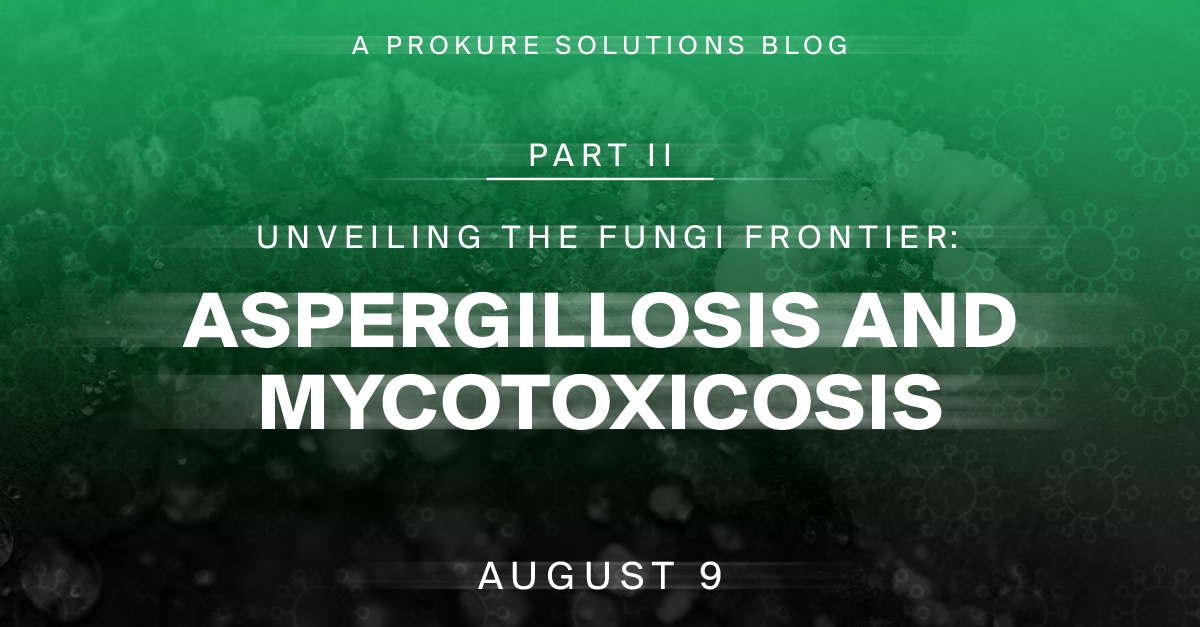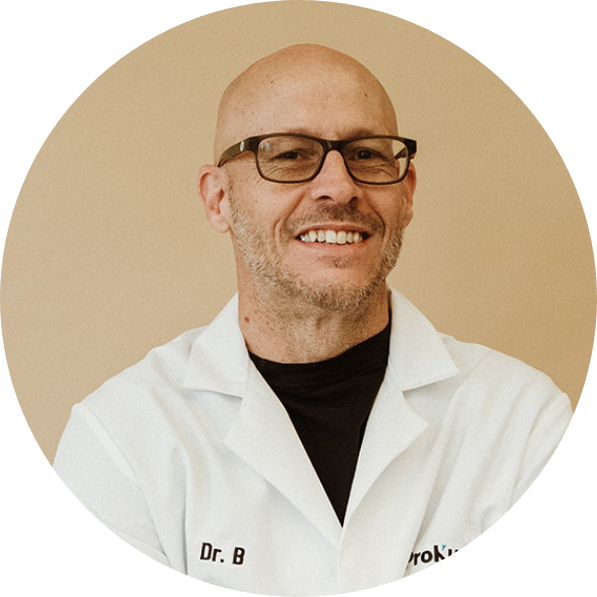As promised, I’m back with the second part of our series “Unveiling the Fungi Frontier,” to share more information about TY&M limits, the dangers they expose, and how they help the industry prioritize the health and safety of their products and the consumers who use them.
The Big Mold Problem
We all know that regulations help keep people healthy and safe. In fact, it’s estimated that up to 40% of fruits and vegetables in North America are wasted before they even reach consumers, partly due to mold and other quality issues during storage and transport. The truth is, there are so many products that people consume every day that could potentially put them at risk. Regulations like TY&M limits help mitigate exposure to mold species that are known to produce toxins, and of course, there are regulations for the actual toxins as well.
Today, we’re going to be talking about aspergillosis and mycotoxicosis – two particularly nasty types of infections caused by mold. These infections range in severity, but determining where, when, and how infection occurs can be tricky.
Here’s Why…
- Aspergillosis is an infection caused by a type of mold (fungus). The illnesses resulting from aspergillosis infection usually affect the respiratory system, but their signs and severity vary greatly. In some people, the spores trigger an allergic reaction. Other people develop mild to serious lung infections. The most serious form of aspergillosis – invasive aspergillosis – occurs when the infection spreads to blood vessels and beyond. Mold growing on crops in the field, as seen in the pictures of corn here, translates to mold growth during the storage of said crops. While the former looks bad, it’s during storage and transportation of these crops that the real problems are propagated, literally and figuratively.
- Poisoning by mycotoxins is called mycotoxicosis. You may be familiar with this condition if you’ve heard about what can happen when you drink moldy coffee. Mycotoxins, metabolites of mold, are poisonous substances produced by fungi or mold. They can be toxic for humans when they are eaten, absorbed into the skin, or inhaled. Unfortunately, mycotoxins are invisible and laboratory testing is required to determine if they are present and/or quantify how much is there. Metabolites are produced when fungi are actively growing and fungi require nutrition for growth. Nutrition comes from the plants during cultivation and harvested materials during storage. Depending on the product, various limits are set for these toxins, all with the goal of mitigating or limiting the overall exposure a person might have over a lifetime.
Once mold starts to grow, it spreads quickly. Mold can start releasing mycotoxins within 24 to 48 hours of growing in a moist or humid environment (read: the perfect environment to grow cannabis) and spread into the food that we eat or the cannabis we consume.

Bottom Line: Don’t Eat It
Okay, so we’ve gone over some common mold-causing illnesses and how mold and its toxic metabolites can be present in products. You might be asking, “What happens when humans eat infected food?”
People can have severe acute reactions or mild ongoing reactions. Symptoms can vary greatly; and side effects can be immediate, delayed, or nonexistent.
The reality is that, just like cannabis plants, some people may be more sensitive to mold than others, and the amount of exposure can also affect how they react. (If you think like me, it might sound like nobody really knows anything – haha!) In all seriousness, exposure to mycotoxins and molds like aspergillus can come from many different sources, and a single regulation might not seem that important, but the overall safety and health of people is cumulative across the numerous products we consume.
For all of you visual learners, here’s a chart that helps break down how mycotoxins can affect the different types of food we consume:

Reference: Cinar A and Onbaşı E (2020) Mycotoxins: The Hidden Danger in Foods. Mycotoxins and Food Safety. IntechOpen. Available at:
What Does This Mean for the Cannabis Industry?
For starters, it’s important to note that the cannabis industry has mainly focused on aflatoxins. The reason for that is aflatoxins are widely regulated due to their severe health risks, including carcinogenicity; in human-language, that means aflatoxins can be extremely dangerous when consumed through inhalation. Most jurisdictions with legalized cannabis require testing for aflatoxins to ensure they are below allowable limits. Typically a non-detect result is required. This is particularly true in the U.S., Canada, and many European countries.
There are several species of Aspergillus mold that produce these aflatoxins, all of which can thrive within cannabis cultivation environments and as endophytes within the cannabis plants themselves.
Key Aspergillus Species of Concern:
- Aspergillus flavus: Known for producing aflatoxins, a group of highly carcinogenic toxins.
- Aspergillus parasiticus: Another species that produces aflatoxins.
- Aspergillus niger: Often associated with black mold; while it’s less likely to produce aflatoxins, it can still cause problems.
- Aspergillus terreus: Can produce Ochratoxin A, though less common.
Some states have regulations that require testing for these specific species, as well. Typical analysis utilizes Polymerase Chain Reaction (PCR) testing to detect the DNA of each specific Aspergillus species within cannabis samples. The logic behind this is that if the mold was ever present within the cannabis, there will be a risk of mycotoxin exposure if consumed. Of course, these species also contribute to TY&M results – yet another example of how TY&M testing can be an indicator for quality of products.
I bet by now you’ve read enough of this blog to reassure you that stringent testing requirements must remain standard across the industry. At ProKure, we strongly concur. Here, we have both the expertise and the products growers need to cultivate the highest quality of cannabis products possible that are safe for consumption.
Join me next time for a deeper dive into the issues with water that TY&M testing helps identify in your crops.

